Catering at the school is an essential part of the quality education of children. For students in primary, middle and senior classes, due to their increased activity in the lessons and changes, a large amount of nutrients is required. And such significant energy costs should be offset by the corresponding hot dishes served daily in educational institutions. What are the main characteristics, features and requirements for school nutrition?
The provision on catering at the school can be found in detail on the official website of the educational institution or directly at the school’s management.
Key points of the provision
1. Regulations and orders are established by each educational institution for an indefinite period and apply to all students.
2. The provision guarantees high quality and food safety for the student, as well as the satisfaction of the basic needs of his body.
3. In each educational institution, a food block (canteen, buffet) should be organized for proper nutrition of students.
4. The diet and diet should be developed in accordance with all epidemiological requirements.
5. Hygienic indicators of products must comply with the standards of the Sanitary and Epidemiological Station.
6. Hot meals are organized for each class, taking into account the educational regime of students. The tables in the food block are pre-set.
7. Food control at school is carried out by an authorized person (s).
Recommendations on the organization of the process are set out in the order on catering at the school, which was approved in 2012 by the Ministry of Health and Social Development and the Ministry of Education and Science of Russia.
What should include hot meals at school
Calorie content, energy value and the content of vitamins in school nutrition should fully meet the needs of the growing body. Therefore, catering at the school should provide students with first and second meals, as well as several snacks.
Breakfast
The main one is a hot dish. Most often, students are offered milk porridge, cottage cheese casserole or scrambled eggs with various additives. In some educational institutions, flour products are also served: pancakes made from wheat flour with jam or sour cream, pancakes, cheesecakes. Serving size should be appropriate for the physiological needs of students.
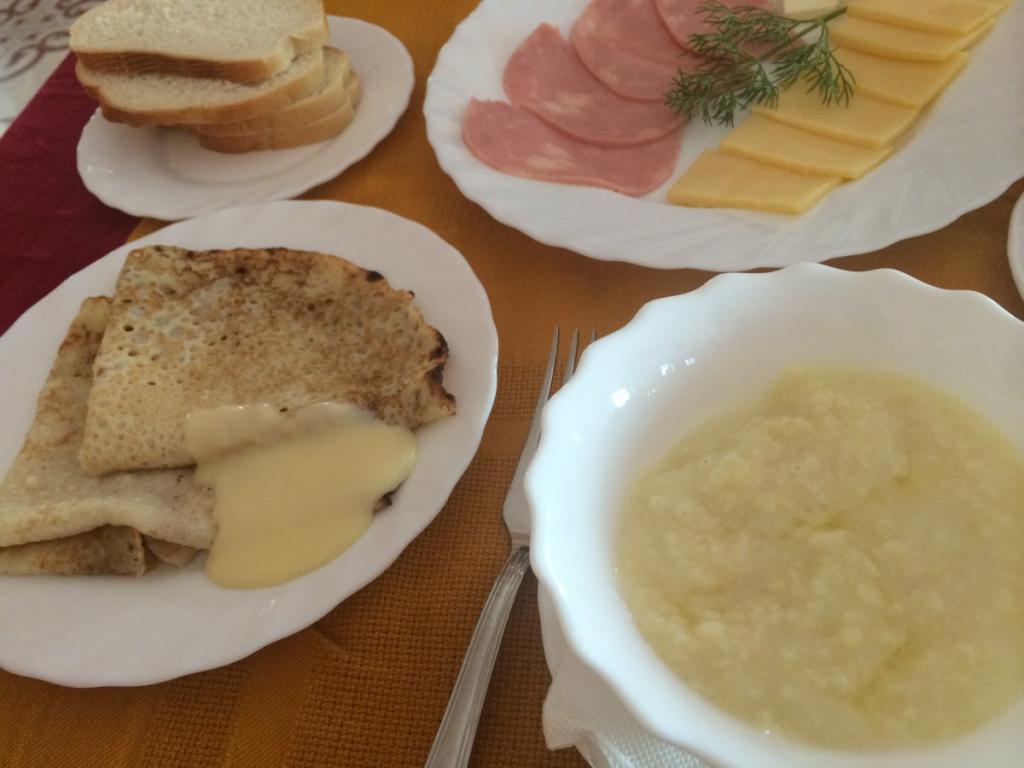
Also, breakfast should contain some appetizer. It could be:
- a sandwich with sausage, butter or cheese;
- fruit or vegetable salad;
- pastry.
A drink is mandatory (cocoa with milk, hot tea, jelly or stewed fruit).
Dinner
A school lunch contains more meals and can be much more varied than breakfast. Students should also be offered a snack, and in this case, the most preferred is a light vegetable salad that stimulates appetite.
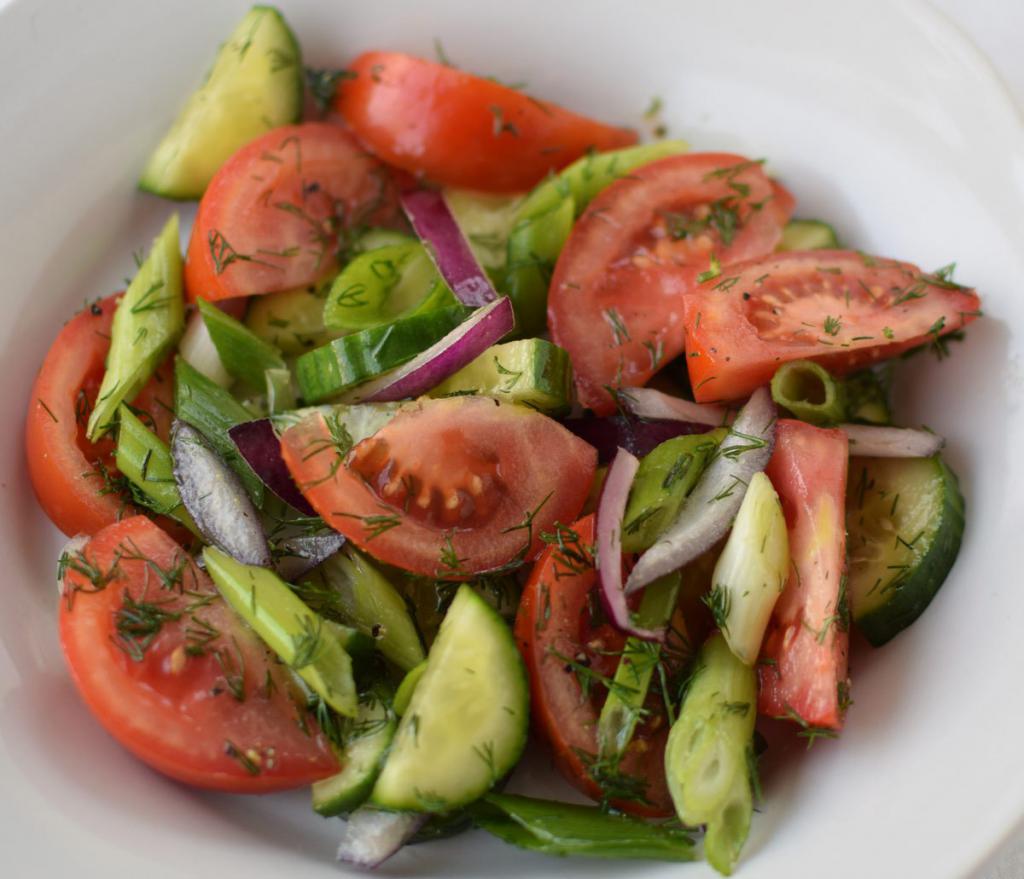
A classic school lunch should consist of two dishes (not including salad): the first and second. At first, a hot liquid dish (borsch, soup of any kind, cabbage soup, pickle) is offered. The second course is meat or fish, or from poultry. As a side dish, rice, buckwheat, corn porridge, pasta of various varieties, potatoes or mashed potatoes, vegetable stew can be used. Often, gravy is added to the serving. School lunch should also contain a hot or cold drink: compote, kissel, tea. Hot dishes include wheat or rye bread.
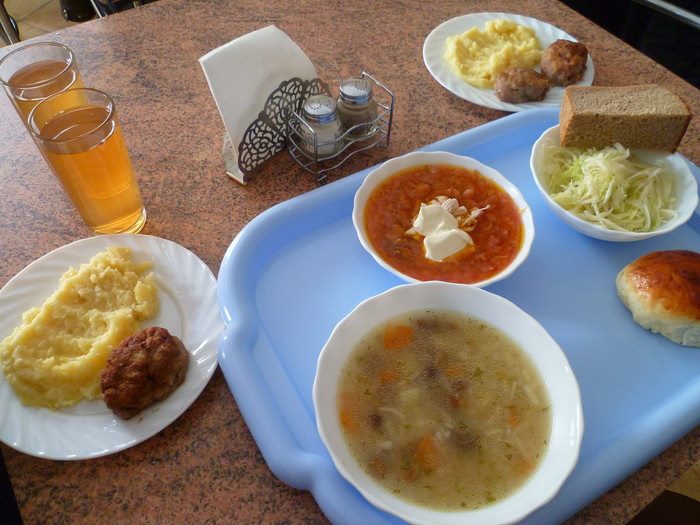
High tea
Students who are in school after lunch (additional classes, sections, circles) may also be offered an afternoon snack consisting of a confectionery without adding cream and drink (milk, kefir, drinking yogurt, fruit or vegetable juice, jelly).
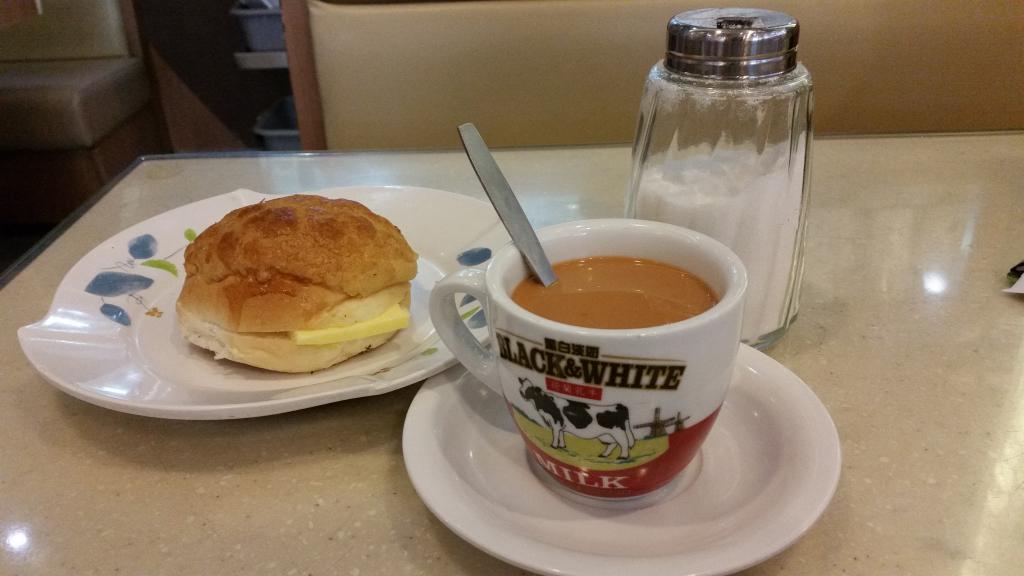
Basic School Nutrition Requirements
- The organization of hot meals at school should ensure the complete safety of the products on offer.
- The diet of students should be formed in advance, 20-30 days in advance.
- The diet of various age groups (7-11 years old and 12-18 years old) should be compiled separately, taking into account the required nutritional value and calorie content of products.
- Products must undergo the necessary heat treatment.
- A weekly diet should be varied, but it can be repeated on specific days of the week (Friday menu, Saturday menu, etc.).
- Dishes are recommended to be prepared immediately before a meal; foods should not be prepared in advance or stored in a refrigerator.
- Food in educational institutions should be accessible to students with diseases of the gastrointestinal tract, that is, preference should be given to such methods of cooking as boiling, stewing, steaming or in the oven.
- This diet should correspond to the compiled menu, however, if necessary, it is allowed to replace dishes with others that are equivalent to them in nutrition and energy value.
- The daily menu can be presented to students for review, it should be hung out before entering the food block or directly in it.
- Reception of food from suppliers must be accompanied by the receipt of the necessary documents proving the quality and safety of products.
- Transportation of products to educational institutions must comply with sanitary requirements.
- On the territory of schools, the organization of additional food blocks is possible: buffets for students to freely choose food products and purchase them.

Requirements for Food Block Employees
- It is necessary to constantly wear special clothes (bathrobe, apron), a hat and work shoes.
- Work clothes and shoes should be kept clean by employees.
- Outerwear and street shoes are left in a special room for staff.
- Employees must wash their hands well and cut their nails (it is forbidden to apply varnish).
- It is forbidden to smoke or dine at the workplace.
- Past and concomitant diseases must be reported to management.
- Each employee of the food block is required to have the proper qualifications and the necessary documents.
School Nutrition Checks
What are the main aspects of production control? Monitoring of catering at the school is carried out on an ongoing basis.
1. Control is carried out by authorized persons holding a certain position in bodies involved in sanitary and epidemiological regulation of nutrition.
2. The aforementioned person (s) monitors compliance with sanitary standards and the timely implementation of necessary preventive measures.
3. Checking the organization of catering in schools is carried out as planned, according to pre-established programs.
4. An authorized person checks the documentation of a general educational institution and the officially issued results of laboratory tests.
5. Also, compliance with hygienic sanitary standards by the employees of the food block is subjected to mandatory verification (the presence of a medical cap, gloves, an appropriate shape is required).
6. The results of the control should be transferred to the leadership of the educational institution and, if necessary, reported to the parents of the students.
School Nutrition Requirements
- In a general educational institution, a school food combine or a special department in the food block, in which food is stored and prepared, should be located.
- The size of the room, the number of seats, as well as a set of dishes and cutlery should correspond to the number of students in the school.
- For meals, dining rooms or blocks should be organized in the main building of the school or in the building attached to it.
- Warehouses for food storage should be placed on the ground floor of the building.
- School students are not allowed to be present in the production premises of the food block.
- High school students (over 14 years old) can be involved in pre-table setting.
The fulfillment of the above requirements is regulated by the law on catering in schools. Section 37 of the Law on Education contains all normative acts on this issue.
School meal plan
School students should also receive education related to the formation of their diet. In connection with such a need, mass events, classroom hours and preventive conversations with students on the topic of proper and healthy nutrition are held in educational institutions. Before the beginning of each academic quarter (six months), a plan for organizing meals at the school is developed. The main part of its development is the compilation of a quality menu and the planning of the delivery of the necessary products to school. A preliminary list of events is also being compiled.
For example, with elementary school students (grades 1-4), you can hold an interesting event on the theme "Day of proper nutrition" or "Life is sweet tooth.
For students in grades 5-9, you can arrange a class hour on the following topics: "Who are the Valeologists?", "Proper nutrition at school" or "Why diet?"
And for high school students (grades 10-11), you can arrange a questionnaire “My food” or a round table on the topics: “We are what we eat” or “What is fast food, or why not follow modern fashion?”

Food in schools of different countries
In conclusion of this article, I would like to introduce you to the diet of students in foreign schools. Each state has national dishes and special eating habits. Catering for schoolchildren is an urgent task for the leadership of all developed countries of the world.
USA
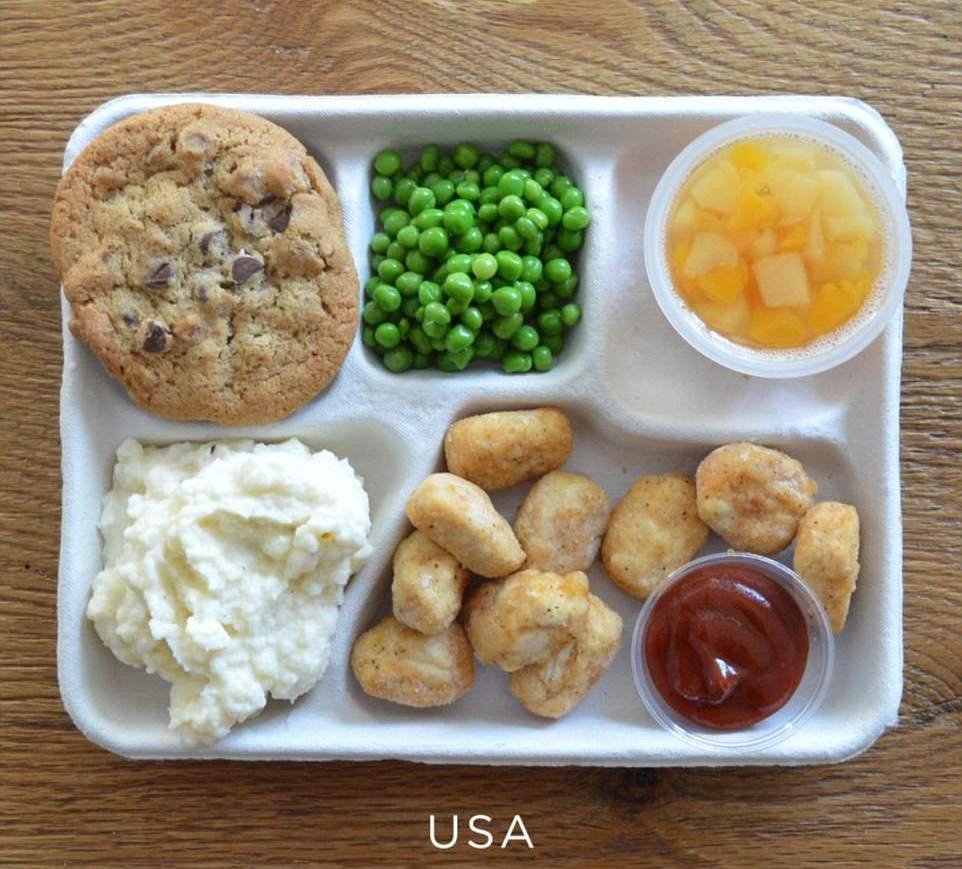
This photo shows an ordinary breakfast of students of American schools. It consists of green peas, chicken nuggets with ketchup and mashed potatoes, oatmeal cookies with chocolate chips and fruit jelly. In terms of nutritional value, it is not inferior to the Russian breakfast, but it is much less useful and balanced.
France
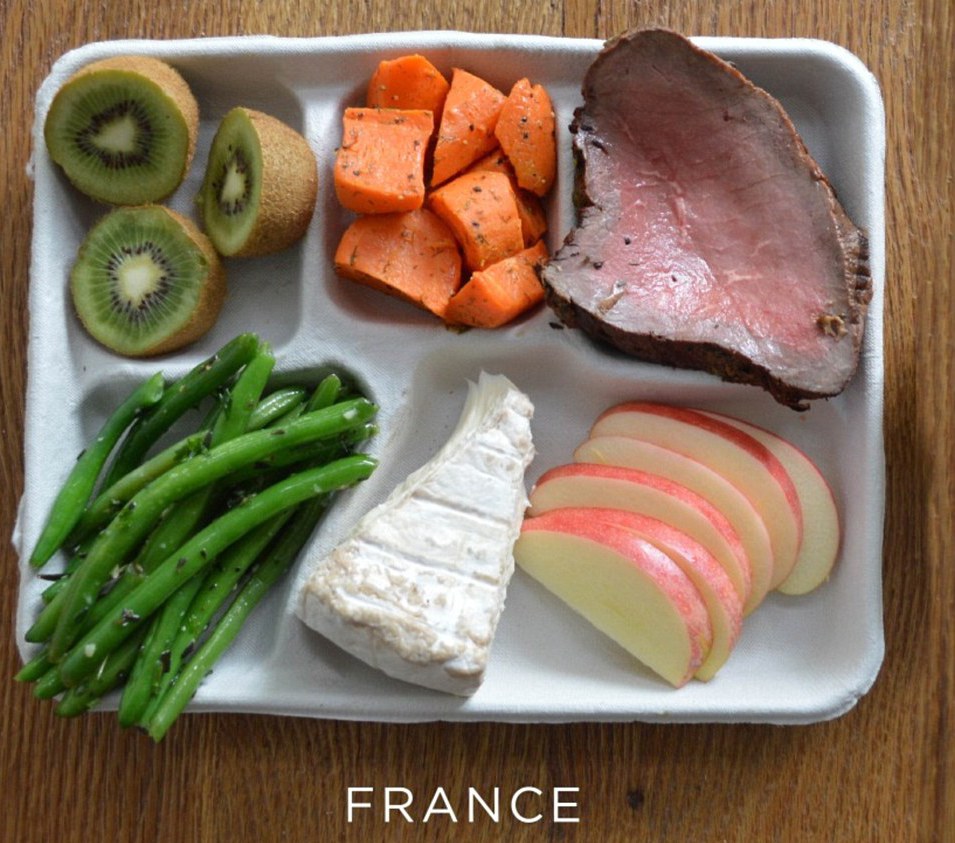
French breakfast can be considered really healthy. It contains vegetables, fruits, cheese and protein-rich boiled meat.
Italy
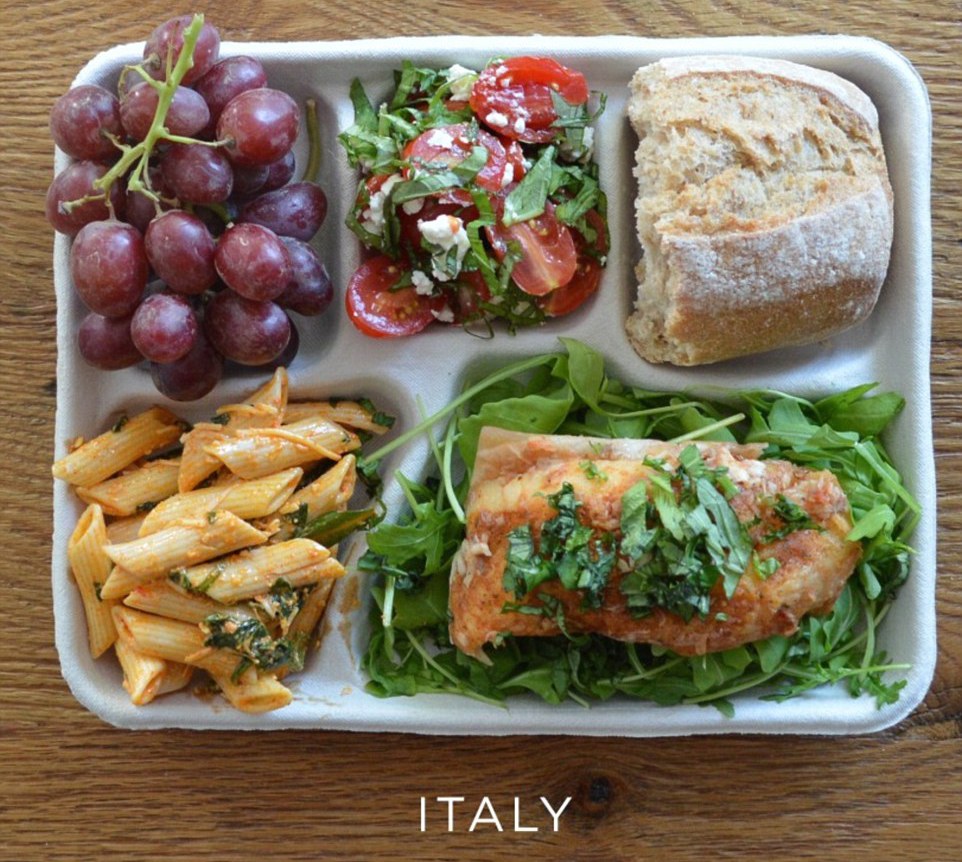
School breakfast in Italy is significantly different from others. From a photograph you can determine the state without even owning specific information. We see traditional Italian pasta, baked fish, baguette, salads and grapes. This breakfast is very balanced and healthy, so we can say with confidence that Italian students get the right amount of nutrients.
Greece
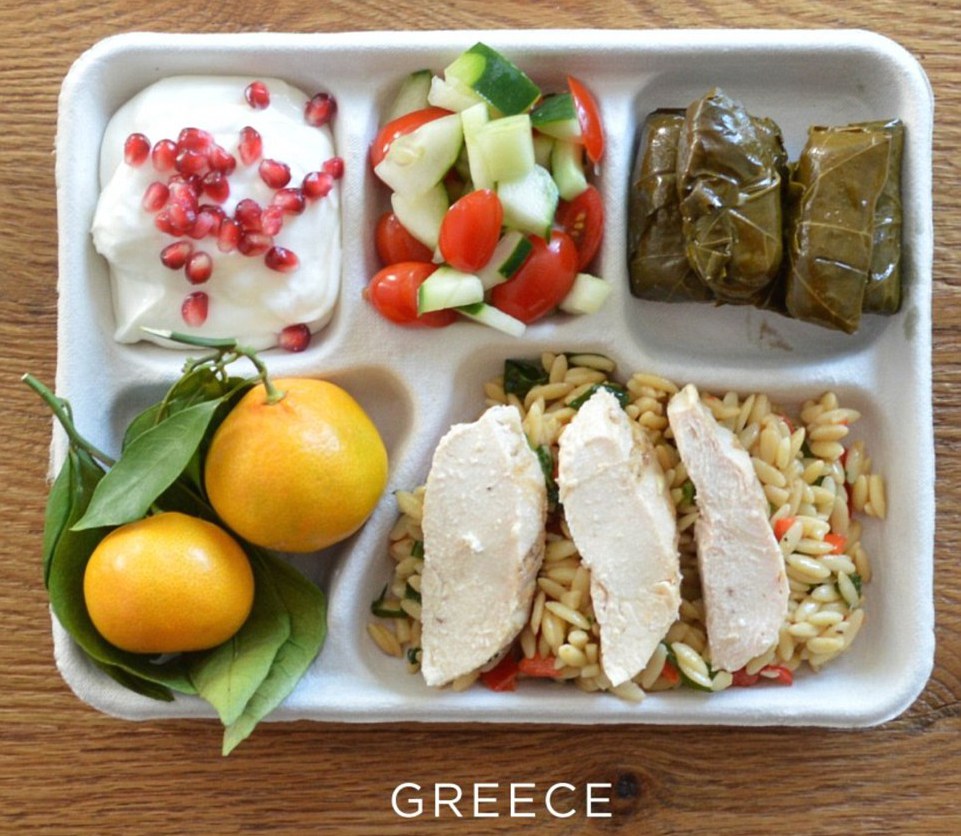
The Greek breakfast consists of boiled chicken, a specialty of pasta (orzo), fresh fruits and vegetables, and natural yogurt. This breakfast is healthy, nutritious and rich in vitamins and minerals.
Ukraine
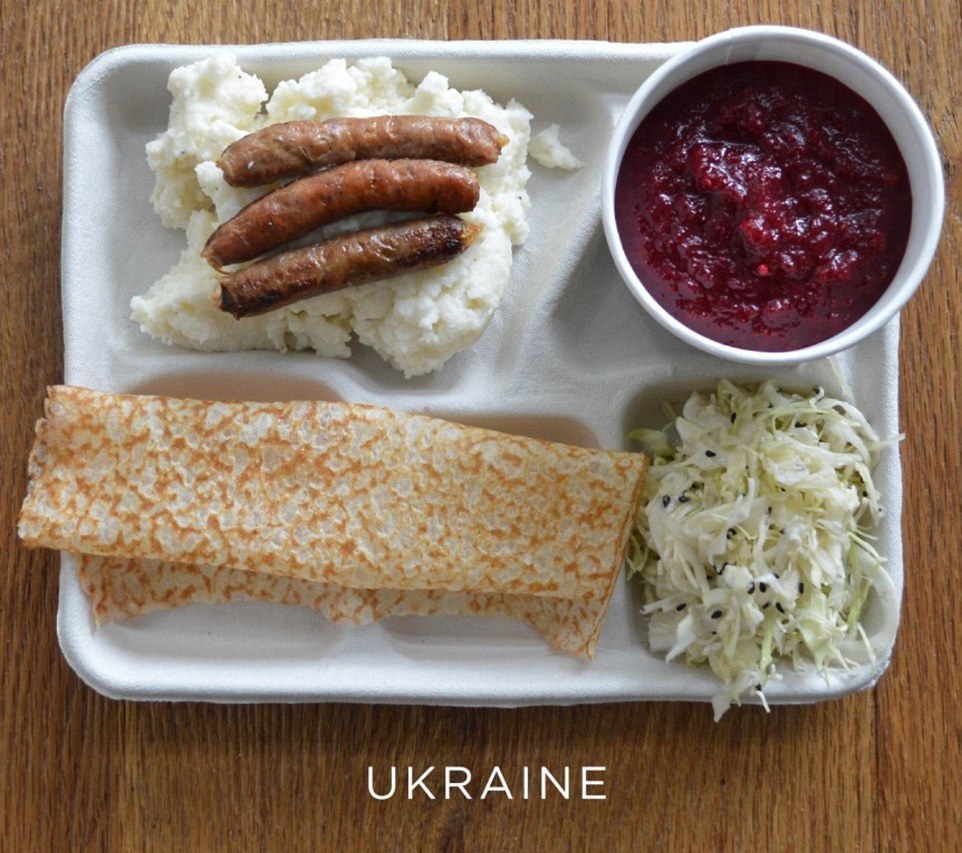
Breakfast of Ukrainian schoolchildren combines appetizer, main course and dessert. As a snack, students are offered a vegetable salad, the main course is rice with sausages, and for dessert - a pancake with jam. Such a full breakfast can easily replace lunch.
Brazil
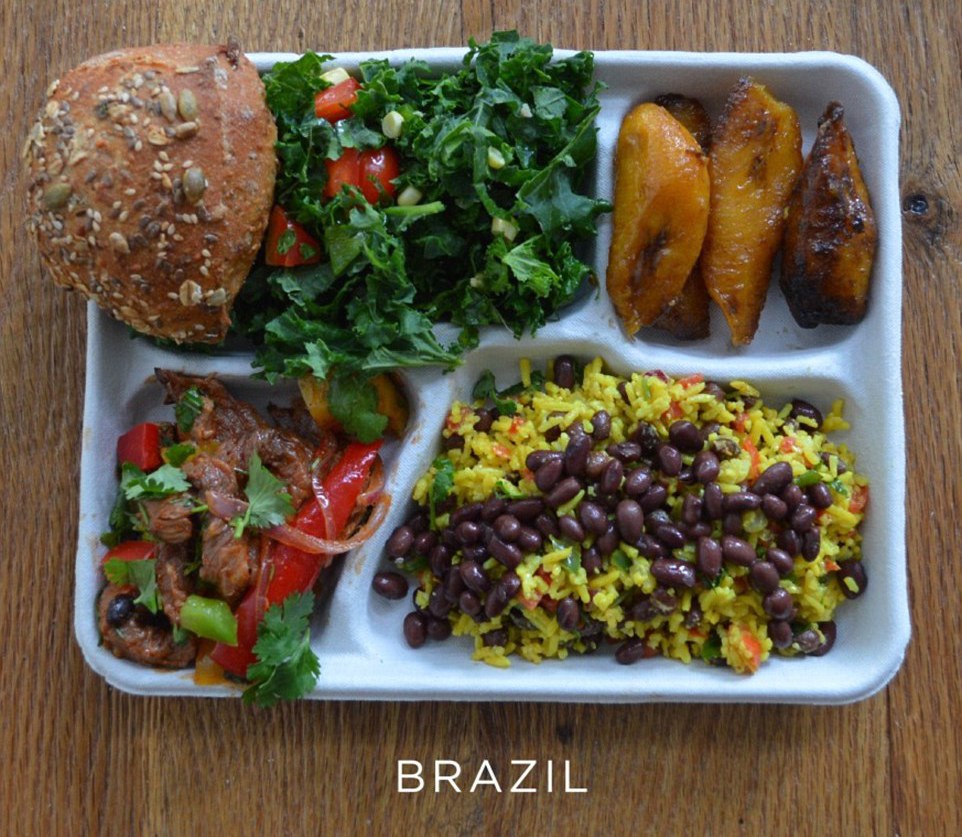
The Brazilian breakfast is quite large in size. It also includes special products specific to South Americans.So, the school breakfast contains Brazilian rice with beans, several types of salads, whole grain bread and traditional fried banana.
Hot food in educational institutions should be full and balanced, as well as useful, so that as few students as possible get serious diseases such as gastritis, pancreatitis, gastroduodenitis, helicobacteriosis, or even an ulcer. Indeed, in the school years it is important to remain healthy, active and able to receive quality education. That is why the organization of children's nutrition at school is the basis for the formation of the intellectual potential of students and a healthy lifestyle.
